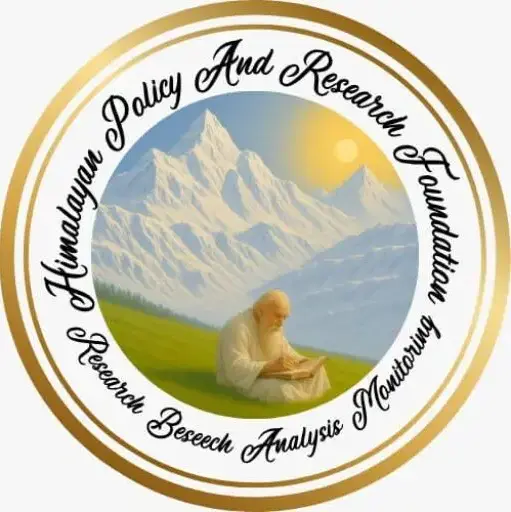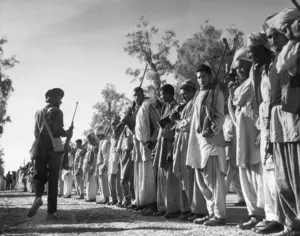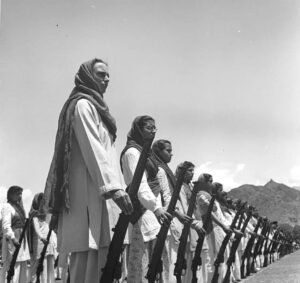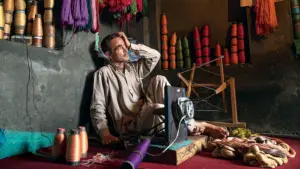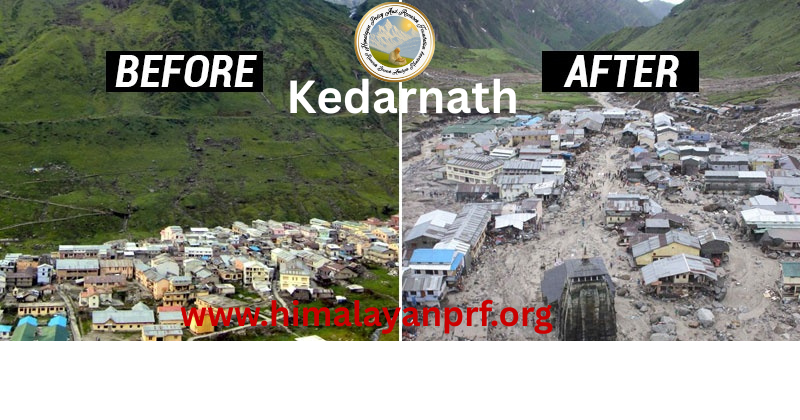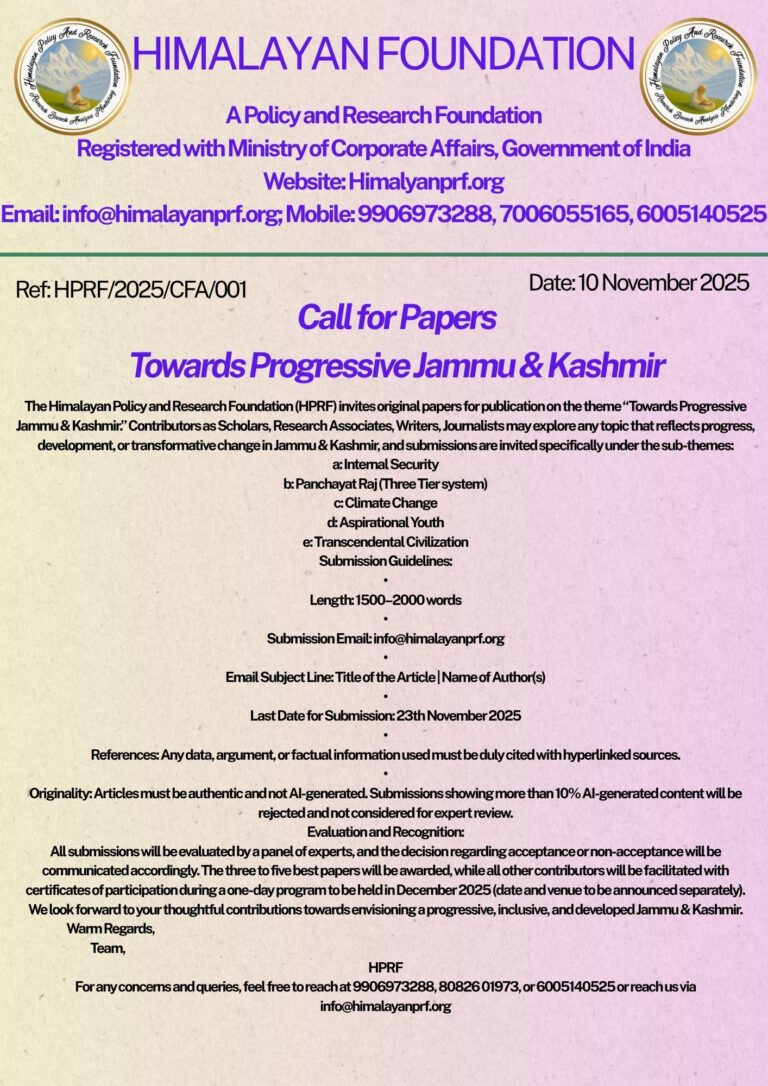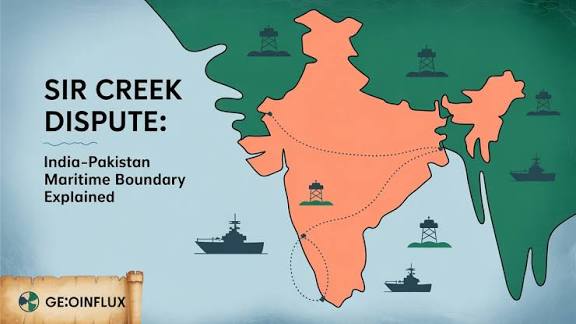BY: Surinder Ambardar ( Socio Political Analyst)
Do You Hear the Himalayas Crying? Their lament echoes through glaciers that retreat silently, through rivers that flood with unseasonal fury, through mountainsides that collapse under the weight of unchecked ambition. To see the Himalayas is to witness grandeur, the youngest yet tallest of the world’s ranges, still rising, still shifting, still alive. Yet to live with them today is to experience fragility, for they are cracking under pressure—climatic, geological, spiritual, and human.
Since time immemorial, the Himalayas have meant more than just towering summits and rugged landscapes. Ancient hymns in the Rigveda reverently call them Himavat—the snowy guardian, the steward of rivers, and the refuge of penitent sages meditating in remote caves. The Mahabharata evokes them as divine thresholds where gods mingled with mortals, the sacred frontier of Bharat. Even Kautilya’s Arthashastra identifies their transcendent value, deeming them a strategic and spiritual bulwark. Across ages, the poets of the Bhakti movement painted those snow-capped peaks as symbols of purity and unwavering resolve, while Buddhist chants echo tales of mountains as waves of transformative sound https://tinyurl.com/fkn7yru5.
Geologists remind us that the Himalayas are young, seismically restless mountains. Formed barely fifty million years ago when the Indian plate thrust into the Eurasian, they are still growing by a few millimeters each year. This growth, however, comes at a cost: earthquakes rock their valleys with alarming regularity, landslides tear open their slopes, avalanches sweep away pilgrim routes. The saga of seismicity was once natural, part of the mountain’s evolution, but now human recklessness multiplies the damage. In March 2025, two rogue earthquakes of magnitude 7.7 and 6.4 rocked Myanmar’s Sagaing region, tremors felt across northeastern India https://tinyurl.com/ydtds5rm. In September the same year, a 6.2-magnitude earthquake in Jalalabad, Afghanistan, sent shockwaves through Jammu, Kashmir, and even Delhi. Each tremor was not only an earth movement but also a reminder of fragility, a whisper from the mountains that their patience is wearing thin https://tinyurl.com/5n6cu2k8.
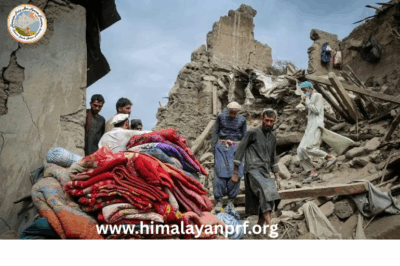
The Himalayas are the fountainhead of Asia’s great rivers—the Ganga, Indus, Brahmaputra, Yamuna—all born of their glaciers. For millennia these rivers carried not only water but also civilization, nourishing crops, shaping cultures, sustaining faiths. Kalidasa in his Kumarasambhava envisioned Himalaya as the father of rivers, a divine being whose daughters married gods. Today, however, that father is aging prematurely, his veins shrinking as glaciers retreat. Scientific studies confirm alarming rates of glacial melt https://www.britannica.com/topic/Kumarasambhava. The Chorabari Glacier near Kedarnath is retreating nearly seven meters per year. Its faster melt carries the memory of tragedy—like the 2013 floods worsened by reckless development. Yet by 2025, most safety recommendations remain unimplemented.
The grief did not end in 2013. A decade later, Joshimath in Uttarakhand began sinking. The holy town, gateway to Badrinath and Hemkund Sahib, cracked open as if the earth itself had lost cohesion. Over 600 houses developed fissures, temples tilted, and hundreds of families were displaced. Satellite data from ISRO revealed that Joshimath sank by five centimeters in just 13 days of December 2022. Scientists pointed to unplanned hydropower tunneling, road construction, and unchecked urbanization as the culprits https://tinyurl.com/4yr96hch. Here was the Himalayas speaking in unmistakable terms: enough is enough. But the heed was partial; development projects continued, often under the guise of national security or pilgrimage facilitation. The tension between faith, livelihood, and environment remained unresolved.
In 2025, the lament grew louder. Monsoon fury swept across the Himalayan states between June and September, killing over 725 people—more than 250 in Uttarakhand, 300 in Himachal Pradesh, and 175 in Jammu and Kashmir. Kishtwar alone saw nearly 140 deaths in a single flood event https://tinyurl.com/mv39wtfc . On May 30, Sikkim suffered massive destruction from Lachung to Mangan; in Himachal, sacred sites like Shrikhand Mahadev and Kinner Kailash were devastated, temples washed away in mud and fury. Religious scholars called these events curses of human intervention, while soil scientists explained them as consequences of slope destabilization, fractured rock masses, and pore-pressure changes. Both interpretations, though couched differently, pointed to the same truth: the Himalayas are destabilized https://tinyurl.com/4pd5mfz5. What hurts more is that the tragedies are not isolated. In Reasi’s Bhadur village of Mahore, a cloudburst killed eleven people, seven of them from the same family. In Drabshalla of Kishtwar, a landslide buried seventeen villagers; in Ghatta of Doda, cloudbursts destroyed highways and homes; in the pilgrimage town of Katra near Vaishno Devi, landslides took thirty-four lives and caused crores of rupees in damage https://tinyurl.com/mjh5pezj.
And yet, despite these warnings, projects of expansion continue. The Sinthan tunnel, the Mughal road expansion, the Sudh Mahadev–Khelani road—all symbolizing ambition but little ecological foresight—threaten to rupture fragile slopes. Scientists repeatedly urge caution: consult soil experts, seismic analysts, disaster management professionals before carving through mountains. But the cry of the Himalayas is often drowned by the roar of bulldozers and the rhetoric of development. In this, one senses not only policy failure but also a moral failure. Mahatma Gandhi once said, “The earth provides enough to satisfy every man’s need, but not every man’s greed” https://theindianschool.in/school-news/earth-day-activities-across-school. In the Himalayas, greed has exceeded need, and the imbalance is being corrected by nature with ruthless force.
The Himalayas cry not just in disasters, but in silent shifts: musk deer habitats shrink, and alpine meadows give way to invasive species. Research on Himalayan biodiversity shows that tree lines are moving upward, disrupting habitats and threatening endemic species https://www.sciencedirect.com/science/article/pii/S2405844024168284. The snow leopard, elusive emblem of the high peaks, is being forced into narrower corridors of survival. The red panda, already endangered, struggles as bamboo forests fragment. What appears to the casual traveler as picturesque greenery is in fact a wounded ecosystem gasping for breath.
This degradation is not solely natural. Deforestation, often in the name of development, eats into slopes that act as natural stabilizers against erosion and floods. In August 2025, a proposed expansion of National Highway-34 in Uttarkashi threatened to fell over 6,000 deodar trees, sparking protests and petitions from locals and environmentalists https://tinyurl.com/22t8rzkj. Such acts may seem minor compared to glacial retreats or mega floods, but every tree cut weakens the mountain’s spine a little more, every slope exposed increases the vulnerability of those who live below. The Himalayas cry not only in catastrophic events but also in the steady thinning of their forests, a slow, quiet lament that often goes unnoticed until disaster strikes.
Water, the sacred gift of the Himalayas, too, is under siege. The rivers born here are not merely streams; they are civilizational lifelines. The Ganga has been worshipped as a goddess for millennia, her waters carrying both spiritual purity and physical sustenance. The Indus shaped the earliest urban civilization in the subcontinent; the Brahmaputra is a river of abundance and wrath, feeding fertile valleys while also flooding them. Yet these rivers today carry pollutants, plastics, untreated sewage, and industrial waste. The glaciers feeding them are melting irregularly, leading to both scarcity and sudden excess. Hydroelectric dams choke their natural flow, often without adequate environmental assessments. Scientists caution that unchecked dam construction in a seismically active zone is like stacking explosives on a trembling floor. The Himalayas weep when their rivers are shackled, for they know the fury of a river denied its rhythm will one day be unleashed with multiplied force.
The cultural memory of the Himalayas is deeply tied to their sanctity. Pilgrimages to Kedarnath, Badrinath, Gangotri, Yamunotri, Amarnath, Vaishno Devi, and countless other shrines have been performed for centuries. The mountains have been the chosen abodes of saints, ascetics, and poets. Adi Shankaracharya is believed to have attained samadhi in Kedarnath; Milarepa meditated in caves of Tibet; Sufi saints found retreat in Kashmiri hills; Kabir and Nanak sang of rivers and snow peaks as symbols of divine balance. These traditions recognized the Himalayas not as inert matter but as sentient guardians. To wound them was to wound the sacred. Yet modernity has treated them as quarry and corridor, as if tunnels and highways could replace sanctity. Religious scholars today often interpret disasters as divine curses for human hubris. While science explains them as outcomes of climate change and ecological imbalance, the symbolic truth remains: when we disregard sanctity, we disregard sustainability.
The cry of the Himalayas is also geopolitical. Stretching across India, Nepal, Bhutan, China, Pakistan, and Afghanistan, they form both boundary and bridge. For South Asia, they are a protector, shielding plains from cold winds, serving as natural fortresses. Yet these very protections are being militarized. The Siachen Glacier, highest battlefield on earth, is a tragic irony—soldiers stationed on a dying glacier, defending lines drawn by men, while the glacier itself melts faster under both climate stress and military activity. China’s Tibetan plateau, where rivers like the Tsangpo (Brahmaputra) originate, has witnessed massive damming projects, sparking concerns downstream https://www.bbc.com/news/articles/c4gk1251w14o. Thus, the Himalayas cry also in the language of politics, for they know that rivers ignore boundaries, winds cross borders, and avalanches respect no flags.
The disasters of recent years underline this transboundary fragility. In Nepal, glacial lake outburst floods have repeatedly destroyed villages. These events are linked by common threads: weakened slopes, unpredictable monsoons, fragile geology, reckless human interference. As reported by Times of India, the Char Dham Yatra faced its worst disruption since the 2013 Kedarnath disaster, affecting four million pilgrims, leaving over 80 dead and 95 missing, and destroying 2,000 homes. Scientific explanations reveal the mechanics of this lament. Soil scientists argue that fracturing of rock masses due to tunneling creates voids, destabilizes pore cementing, and makes slopes vulnerable to landslides. Seismologists warn that vibrations from blasting disturb the cohesion of young mountains. Climate models predict heavier, more erratic rainfall in Himalayan belts, intensifying landslides and floods. The Intergovernmental Panel on Climate Change (IPCC) has classified the Hindu Kush–Himalaya region as one of the most climate-vulnerable on Earth https://www.ipcc.ch/report/ar6/wg2/chapter/chapter-10/. When these warnings meet the lived reality of disasters, one cannot ignore that the Himalayas are not only crying—they are screaming.
Hope, though fragile, endures. Mountain communities have long practiced harmony: terrace farming that respects slopes, water harvesting balancing supply, sacred groves protecting trees, and festivals honoring rivers and snow. In Sikkim, organic farming shows development can avoid destruction; in Ladakh, traditional water systems sustain arid valleys. Local wisdom teaches solutions lie in listening to those who live with the Himalayas as kin, not commodities. After the Kedarnath floods, Justice Ravi Chopra’s committee recommended strict environmental assessments, hydropower restrictions, and preserving eco-sensitive zones, supported by experts like Hemant Dhyani and D. P. Dobhal https://tinyurl.com/8upnsnhw. Yet a decade later, most remained unimplemented—like prayers unsaid. In 2025, with repeated tragedies, will policymakers finally hear the Himalayas’ urgent cry? This cry is ecological (melting glaciers, landslides), cultural (disrupted pilgrimages, damaged temples), political (border disputes, militarized glaciers), moral (greed consuming beyond need), and existential—impacting over 1.5 billion people dependent on Himalayan waters, soil, and climate. Ignoring it risks not just disaster, but civilizational collapse.
To listen is to awaken to the mountains’ silent speech—heard in the wind through pines, the thunder of avalanches, and the whisper of melting glaciers. Ancient sages called them Himavat, a living presence that sustains rivers, cultures, and civilizations. Kalidasa saw them as the earth’s balance between heaven and land, warning that to wound the Himalaya is to wound ourselves. Today, the wounds multiply: Kedarnath’s tragedy, Himachal’s cloudbursts, Gangotri’s glacier bursts, and Sikkim’s landslides are all cries of warning. Scientists explain them as seismic risks and climate shifts, yet the deeper truth is simpler—we no longer treat the Himalaya as sacred but as a quarry for greed, where rivers are choked by pollution and snow darkened by black carbon. The Himalaya, though scarred, is still rising and capable of renewal. Its glaciers feed rivers, forests still shelter life, and villages echo devotion. As Gandhi said, nature is a responsibility, not property. Reconciliation needs reverence for conservation and reason to prevent arrogance. The Dalai Lama urged “education of the heart.” The Himalaya’s cry is a summons: civilizations depend on rivers, forests, and snow. Borders shift, but the Ganga flows on.
In conclusion, the year 2025 has shown with painful clarity how fragile the Himalayan region has become. Twin earthquakes in March and September shook Myanmar’s Sagaing and Afghanistan’s Jalalabad shook northern areas and killed pilgrims in Kishtwar, while monsoon fury claimed over 725 lives across Uttarakhand, Himachal Pradesh, and Jammu & Kashmir. Sikkim was devastated by floods from Lachung to Mangan, sacred shrines like Shrikhand Mahadev and Kinner Kailash in Himachal were swept away, and cloudbursts in Reasi, Drabshalla, Ghatta, and Katra brought further loss of lives and homes. Avalanches on Zoji La buried soldiers and travelers, and the Char Dham Yatra saw its worst disruption in years, leaving over eighty dead, nearly a hundred missing, and thousands displaced. Scientists warn that melting glaciers, destabilized slopes from reckless construction, blasting in young mountains, and deforestation such as the proposed felling of 6,000 deodar trees in Uttarkashi are multiplying natural risks. These calamities are no longer isolated—they are a pattern born of human neglect. Renewal requires urgent action, guided by science and spirit.
Ignoring the cry hastens ruin; heeding it restores our ancient bond with the earth. It is here that governments, and particularly state governors, must rise beyond short-term relief to enforce strict environmental safeguards, regulate development in fragile zones, protect forests, and ensure pilgrimages and livelihoods remain sustainable. True compensation must go further than financial aid to include resilient rebuilding, ecological restoration, and disaster preparedness. The guardianship of the Himalayas now rests heavily on those in power, and governors must act not only as administrators but as custodians of ecological integrity, ensuring that every decision protects both the people and the mountains that sustain them.
